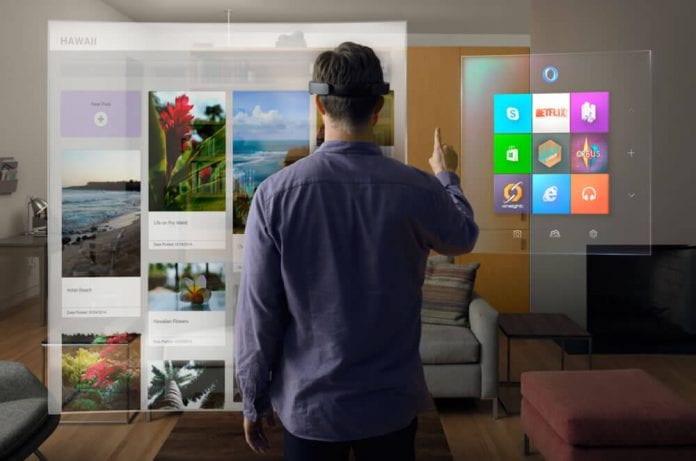Microsoft has made new inroads for its HoloLens, the indoor more augmented reality headset. The headset which is supported by Windows 10 now has its own calendar and email apps. This is due to the device’s ability to run applications that can overlay 3D objects on the physical environment of the user.
The introduction of the new Outlook Mail app and the Calendar apps gives users the chance to create a 3D overlay of their email and calendar for the day on the wall for them to see from the 3D glass. In a blog post to the world, Microsoft wrote that thanks to the Outlook Mail feature which would be on HoloLens, users could use it to continue using their email accounts and stay on top of them in this fast changing world. It helps you to continue interacting with your email and other digital content in the real world at the same time. The calendar feature also allows users to see what’s coming up next with relative ease.
The apps, which are Universal Windows Platform are going to be displaying a streamlined version of the calendar views which will pop up in the Outlook PC and the mobile versions. In the HoloLens case, the emails will look like they are floating in midair. Customization of the view is allowed thanks to the accent graphics presence. The accent graphics appear as a rendition of the Seattle skyline in various screenshots that were put in the blog by Microsoft.
The HoloLens is Microsoft’s own version of taking over the augmented and virtual reality devices market. The HoloLens is available for $3,000 to developers to do with as they please.
Strategy Analytics, a statistical company, predicted back in April that VR devices would generate around $895 million in revenue for this year alone. 77 percent of that revenue will be attributed to the high-end VR devices such as the Oculus Rift, which is owned by Facebook, the Sony PlayStation VR, and the HTC Vive. The other smaller end VR devices which are usually compatible with smartphones will be accountable for the rest of the money in revenue. The analyst firm also expects there to be 12.8 million sales of VR headsets of which only 13 percent will be classed as high end.
Microsoft has clearly been busy expanding the HoloLens features as evidenced by the release of the first major Windows Holographic update which was on the 31st of May, as announced by Microsoft technical fellow, Alex Kipman.









